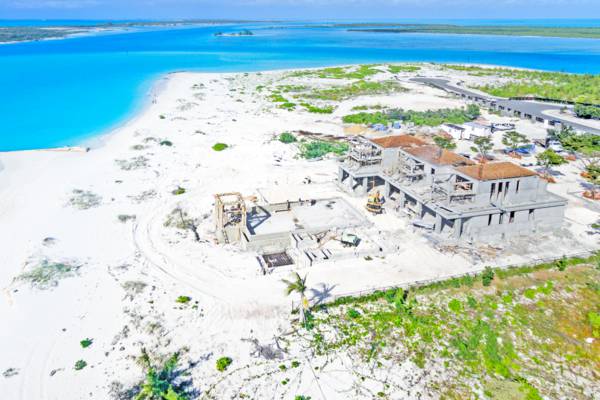Weathering the Storm: Turks and Caicos Real Estate Market’s Response to Natural Disasters
In the idyllic paradise of the Turks and Caicos Islands, where azure waters meet white sandy beaches, the real estate market has faced its fair share of challenges, particularly when it comes to natural disasters. The region is no stranger to the unpredictable forces of nature, experiencing hurricanes and other climatic events that can leave a lasting impact. This article explores how the Turks and Caicos real estate market has responded resiliently to these challenges and emerged stronger amidst the storms.
Weathering the Hurricanes: Turks and Caicos, like many other tropical destinations, is susceptible to hurricanes. These powerful storms can cause significant damage to infrastructure and property, disrupting the real estate market. However, the local real estate sector has implemented robust building codes and regulations to ensure that properties are constructed to withstand the forces of nature. Developers have increasingly focused on hurricane-resistant designs and materials, providing a sense of security to homeowners and investors alike.
Insurance Innovations: As the frequency and intensity of hurricanes in the Caribbean region have increased, insurance has become a crucial factor for the real estate market’s resilience. The Turks and Caicos Islands have witnessed a shift in insurance practices, with policies now tailored to address the unique challenges posed by tropical weather patterns. Property owners are encouraged to invest in comprehensive insurance coverage that includes protection against hurricane damage, ensuring a quicker recovery process and minimizing financial losses.
Diversification of Investments: Acknowledging the vulnerability of the real estate market to natural disasters, there has been a notable trend towards diversification of investments in the Turks and Caicos Islands. Investors are increasingly exploring opportunities in different sectors, such as hospitality, renewable energy, and infrastructure. Diversification not only spreads risk but also contributes to the overall resilience of the local economy, mitigating the impact of natural disasters on the real estate market. You can also take expert help from Turks and Caicos real estate agents.
Community and Government Initiatives: The Turks and Caicos government, in collaboration with local communities, has played a pivotal role in enhancing the resilience of the real estate market. Investments in disaster preparedness, early warning systems, and infrastructure improvements have been prioritized. Additionally, community engagement initiatives have fostered a sense of collective responsibility, encouraging residents and businesses to actively participate in disaster resilience efforts.
Conclusion: While natural disasters pose a continual threat to the Turks and Caicos Islands, the real estate market has demonstrated commendable adaptability and resilience. Through innovative construction practices, improved insurance solutions, diversification of investments, and collaborative efforts between the government and local communities, the Turks and Caicos real estate market continues to weather the storms. As the region remains steadfast in its commitment to sustainable development, it serves as a testament to the strength and resilience of the human spirit in the face of nature’s challenges.
Rising from the Rubble: Post-Disaster Recovery Strategies
The aftermath of a natural disaster can be challenging, but the Turks and Caicos Islands have showcased remarkable recovery strategies that contribute to the real estate market’s resurgence. Post-disaster recovery involves not just rebuilding structures but also revitalizing the local economy and community spirit.
- Innovative Reconstruction Techniques: In the wake of a hurricane, the real estate sector has embraced innovative reconstruction techniques. This includes the use of sustainable and eco-friendly materials, which not only fortify structures but also align with global initiatives towards environmental conservation. The incorporation of resilient design principles ensures that properties not only recover swiftly but are better prepared for future natural challenges.
- Economic Diversification and Tourism Resilience: Recognizing the interconnectedness of the real estate market with the broader economy, the Turks and Caicos Islands have diversified their economic base. The tourism sector, a significant contributor to the real estate market, has been fortified through the promotion of ecotourism and sustainable practices. This diversification not only enhances the region’s economic resilience but also sustains property values by attracting a diverse range of investors and visitors.
- Government Incentives for Reconstruction: The Turks and Caicos government has implemented strategic incentives to expedite the reconstruction process. Tax breaks, grants, and other financial incentives encourage property owners and developers to rebuild promptly, fostering a swift recovery. Such governmental support not only assists in the restoration of the real estate market but also instills confidence among investors and potential homeowners.
- Community Engagement and Social Cohesion: Beyond physical reconstruction, the emphasis on community engagement remains a cornerstone of the recovery process. Community-driven initiatives and support networks have been instrumental in rebuilding not just structures, but the very fabric of society. The sense of unity and resilience among locals contributes to the overall appeal of the Turks and Caicos Islands, making it an attractive destination for those seeking not just a property but a community to belong to.
- Adaptive Urban Planning: Urban planners in the Turks and Caicos Islands have embraced adaptive planning strategies. This includes zoning regulations that account for natural disaster risk, ensuring that new developments are located in areas less prone to damage. Incorporating green spaces, resilient infrastructure, and sustainable urban planning principles not only safeguards the real estate market but also enhances the overall quality of life for residents.
Conclusion:
The response of the Turks and Caicos Islands to natural disasters reflects a synergy between proactive measures and community resilience. Through a combination of innovative construction practices, economic diversification, government incentives, community engagement, and adaptive urban planning, the real estate market has not only weathered the storms but emerged more robust and forward-thinking. As the islands continue to adapt and evolve, the Turks and Caicos real estate market stands as a testament to the resilience, determination, and unwavering spirit of a community united in the face of adversity.


